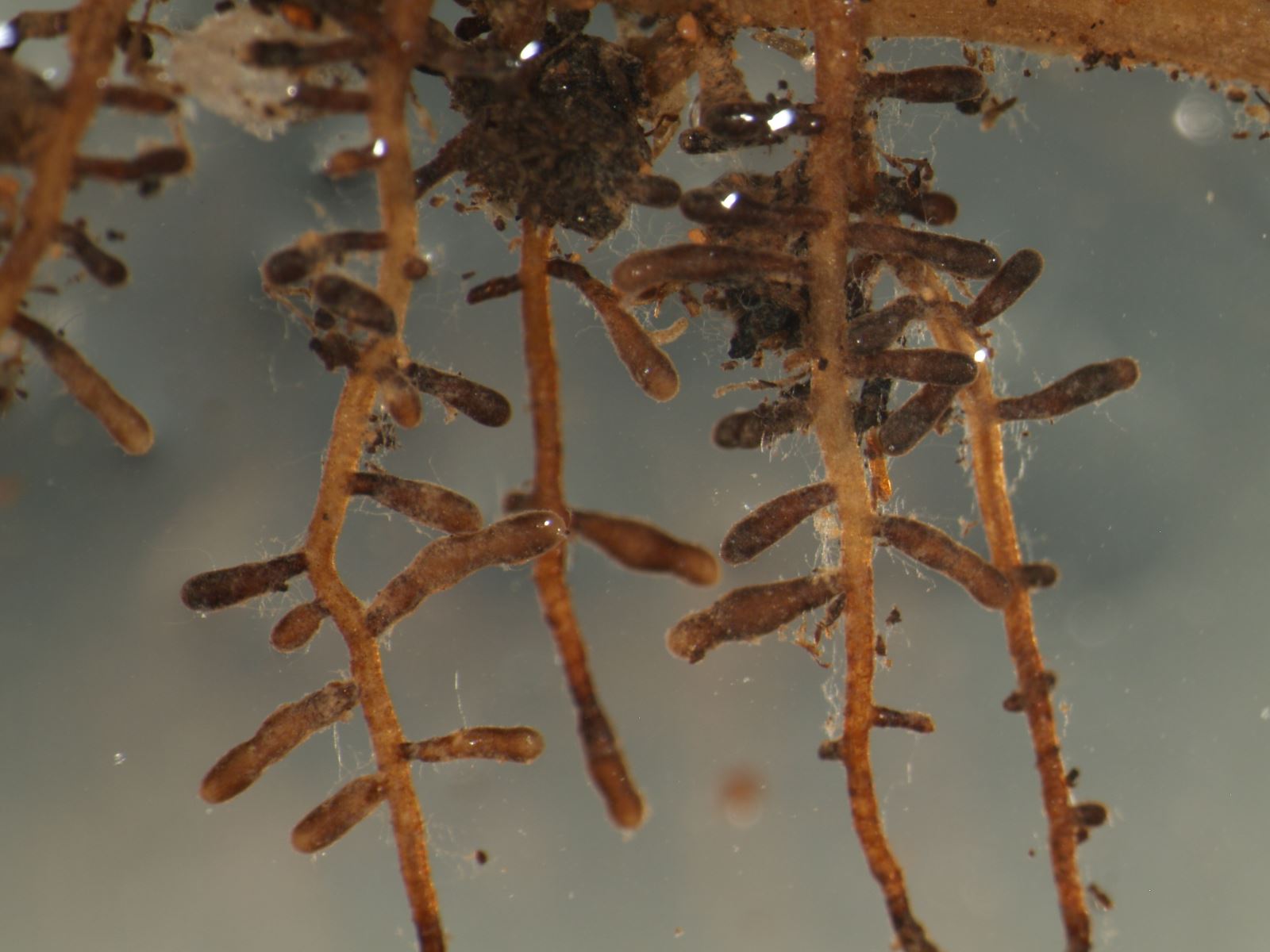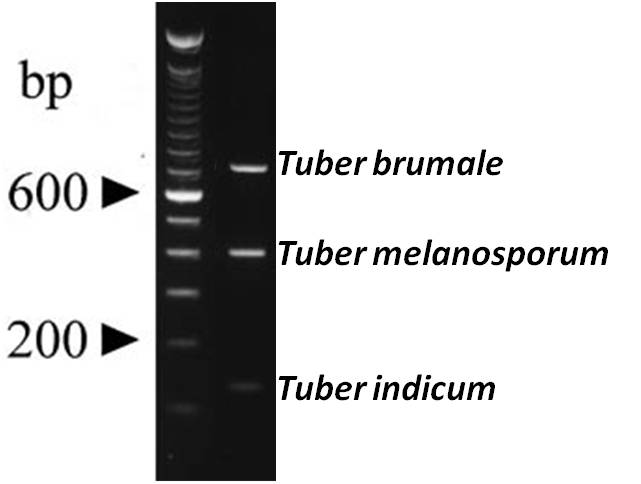Diagnosis of Truffles by Molecular Methods
If truffles are not mature enough, it is very difficult to diagnose morphologies by macroscopic and microscopic investigation. In such cases, only molecular techniques can produce definitive results. The high commercial value
Tuber melanosporum (1000 Euro/kg) and the lower value of the Chinese truffle
Tuber indicum (30 Euro/kg) are morphologically similar, causing unfair competition in the truffle market. By looking at the appearance, it is very difficult to distinguish between these two species. Even more serious,
Tuber indicum infused seedlings invade the tuber melancholy truffles available in Europe, and after a while the truffles start to produce
Tuber indicum instead of
Tuber melanosporum.
Identification of Truffle Species with Mycoriza
Identification and certification of myrorizal seedlings is very important. The aim is to check whether the purchased truffle-infused seedlings are adequately infused with the correct type of truffle and to determine whether there is a myrorizal dishwasher belonging to another undesirable mushroom other than the desired type of truffle.
The roots are carefully washed to remove the soil. The root sample under the stereo microscope is examined first with low power and then with a high-power microscope. Recognition of mycorizas and the mycoriza of one type of truffle requires a very powerful microscope and a good experience to distinguish from the other. A non-expert can confuse the mycorizas of Tuber melanosporum with the mycorial structures of fungi that have nothing to do with Sphaerosporella brunnea.
.jpg)
.jpg)
If it is determined that the entire root constitutes mycoriza with the desired truffle, the planting of the seedling is approved. This process is the most important stage in the culture of truffles. The goal in vaccination is to ensure that the plant root is 100 percent mycoriza. Foreign ectors that can grow rapidly by planting plants that have not formed full mycoriza or are contaminated with other fungal spores become clear and easy targets of foreign ectors. In this case, unwanted mushroom species are grown instead of truffles


The method of defining truffle species with micoriza also has a very important place in the truffle industry. Truffle vaccinated seedlings have enough mycoriza of the desired species at the root, contamination of unwanted fungi (dishwasher) report to be prepared and the basic method used for certification. Because truffle-infused seedlings are very expensive, it is very important for entrepreneurs who will build the truffle to ensure the accuracy of the seedlings they will buy, to start the installation of the truffle correctly and not to waste any money and time.
After making sure that the truffle-infused seedlings are properly and adequately inoculated, the truffle will be planted in the ground and the truffle will be established. After the installation of the truffle until the first harvest year (4-5 years) periodically, samples to be taken from the root of randomly selected trees in the truffle should be examined. whether there is the desired myrorizal development should be monitored. If this follow-up is done, it can be estimated whether the product will be purchased on time. Otherwise, planting the soil of vaccinated seedlings and healthy development of trees is not enough for truffle harvesting.
Defining truffle types from mycoriza requires expertise and experience. Experts who do not have sufficient experience can confuse the mycoriza of Tuber melanosporum with Sphaerosporella brunnea, which is contaminated during the development of seedlings in greenhouses. The seedlings to be used with such an accidental one will be produced after 5 years instead of Tuber melanosporum, spherosporella brunnea type mushrooms will be produced which are contaminated with contamination in the greenhouse. Only 10% of truffle entrepreneurs in the world are successful. It is observed that the successful ones are usually producers who receive scientific support from universities.
Identification of Mycorizaof of Truffle Species with Molecular Techniques
It is not possible to distinguish the root samples of tuber indicum vaccinated seedlings and Tuber melanosporum vaccinated seedlings by myroral diagnosis. The morphology of both mycoriza is the same. It is only understood by molecular techniques whether a mycoriza belongs to Tuber melanosporum or Tuber indicum. Diagnosing the mycoriza at the root of truffle-infused seedlings with molecular techniques is very important for reporting vaccinated seedlings and for the reliability of certification.

The mycoriza of infacted seedlings produced at Mugla Sıtkı Kocman University Truffle Application and Research Center within the scope of an international project carried out in cooperation with TUBITAK-CNR (italy) and certification studies are being carried out.
Tuber melanosporum, Tuber indicum and Tuber brumale types, which are very similar to each other by the molecular method applied in our laboratory, are distinguished by a single reaction without the need for sequence analysis and results are obtained quickly.